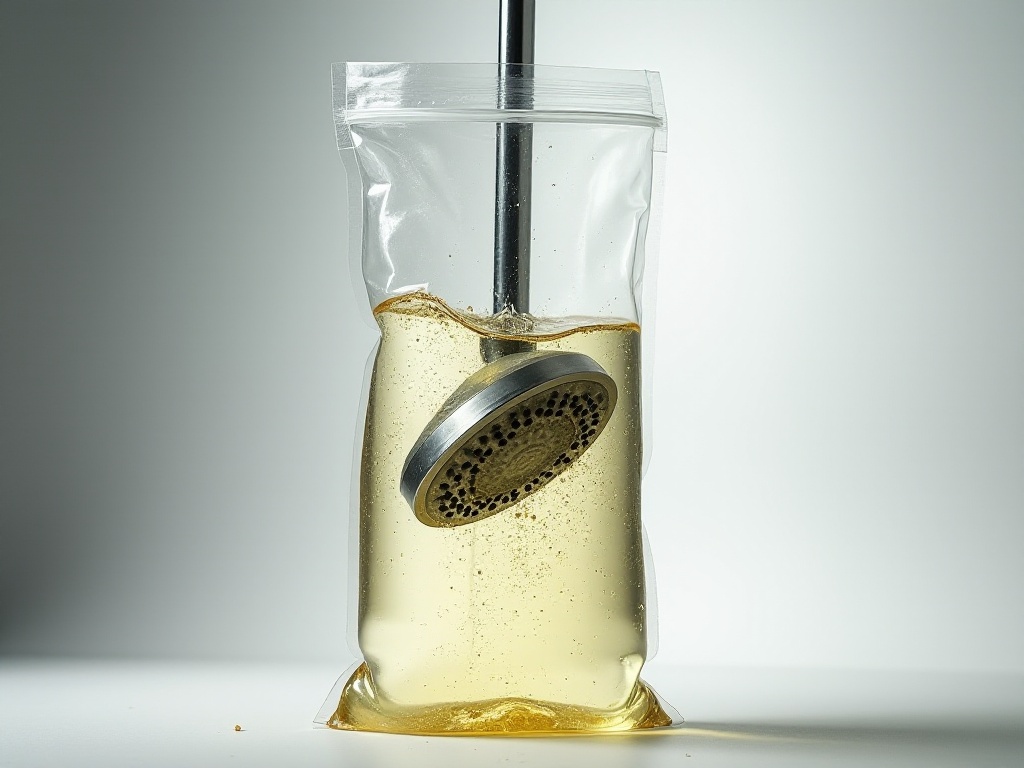Opening Remarks
In daily life, we often hear various advice about healthy living. But have you ever wondered about the scientific basis behind these recommendations? As a blogger who has been deeply involved in the healthy lifestyle field for many years, today I want to share some practical life tips to make your life healthier and easier. Over the past decade, I've interviewed numerous nutrition experts, sports therapists, and lifestyle coaches, collecting and organizing a wealth of practical health advice. These recommendations are not only based on scientific research but, more importantly, have been tested in practice.
Dietary Wisdom
When it comes to healthy living, diet management is fundamental. I remember once a reader asked me, "Why can't I control my weight?" This question is particularly representative. According to National Bureau of Statistics data, the proportion of overweight adults in our country has reached 50.7%. This number is shocking, isn't it? The main reason is that modern life's fast pace forces many people to choose takeout or fast food, leading to nutritional imbalances.
To scientifically manage weight, the key is to establish regular dietary monitoring habits. I suggest weighing yourself at a fixed time each week, such as every Monday morning on an empty stomach. Why choose this time? Because it avoids interference from daily weight fluctuations, making the data more accurate. Also, I recommend using a professional weight tracking application to visually monitor your weight change trends.
Nutritional balance is also crucial. Many people think nutritional balance means eating less, which is a big misconception. According to the Chinese Nutrition Society's recommendations, a healthy diet structure should be: 50-65% energy from carbohydrates, 10-15% from protein, and 20-30% from fat. How should we implement this in daily diet?
First, pay attention to combining refined and whole grains in staple foods. While refined rice and flour are tasty, they have lower nutritional value. It's recommended to replace 30-50% with whole grains like brown rice, oats, and buckwheat. These whole grains are rich in dietary fiber and B vitamins, helping control blood sugar and improve gut health.
Second, protein sources should be diverse. Besides common eggs and lean meat, bean products and fish are also important sources of quality protein. Deep-sea fish, in particular, not only contain quality protein but are also rich in omega-3 fatty acids, which are very beneficial for cardiovascular health. It's recommended to eat fish 2-3 times per week, 80-100 grams each time.
Third, vegetable and fruit intake should follow the "three colors" principle. Green vegetables like spinach and broccoli are rich in folic acid and vitamin K; red produce like tomatoes and carrots contain abundant carotenoids; purple foods like eggplants and blueberries are rich in anthocyanins. Daily vegetable intake should be 500 grams, with dark vegetables accounting for more than half. Fruit intake should be 200-350 grams daily, preferably seasonal fruits.
Regarding eating habits, I particularly emphasize several points: First, develop regular meal times and portions. Irregular eating disrupts the body's metabolic rhythm, increasing the risk of obesity and digestive system diseases. Second, pay attention to eating speed - each meal should take at least 20-30 minutes. Thorough chewing not only aids digestion but also gives the brain enough time to receive satiety signals, avoiding overeating. Third, control nighttime eating - dinner should be completed 3 hours before bedtime, avoiding high-calorie foods before sleep.
For many office workers, maintaining a healthy diet on workdays is challenging. I suggest preparing ingredients on weekends: wash and cut vegetables and fruits into portions, prepare healthy ready-to-eat snacks like nuts and yogurt. This way, you can quickly assemble nutritionally balanced meals on workdays. Also, consider keeping a small refrigerator in the office for storing fresh fruits and yogurt, avoiding high-calorie snacks when hungry.
Physical Care
Regarding physical care, water intake is most easily overlooked. Did you know? According to World Health Organization research, adults need to consume 2000-2500 milliliters of water daily. However, surveys show that over 60% of people experience varying degrees of dehydration. Long-term dehydration not only affects bodily functions but also accelerates skin aging and increases the risk of stone formation.
Let me share a tip: make drinking water a ritual. For example, I prepared a graduated water bottle, and the first thing I do every morning is fill it up and drink it on schedule. This ensures adequate water intake and cultivates good drinking habits. Note that the body's water needs vary with different activity levels and climate conditions. During exercise or in hot weather, water intake should be appropriately increased.
Besides basic hydration, skin care is an important part of physical care. Many believe that more expensive skincare products are better, but this view isn't accurate. According to dermatologists' research, a basic but effective skincare routine only needs three steps: cleansing, moisturizing, and sun protection.
Cleansing is the first step in skincare. Choose cleansing products suitable for your skin type. Dry skin types should choose gentle amino acid-based cleansers, while oily skin types can choose products containing salicylic acid. Water temperature shouldn't be too high to avoid damaging the skin barrier. Moisturize immediately after cleansing, ideally when skin is slightly damp, as this is when skincare products are best absorbed.
Sun protection is often overlooked, but it's crucial for preventing skin aging. UV rays can penetrate clouds and glass even on cloudy days or indoors. Choose sunscreen with SPF30+ and PA+++ or higher, use daily, and reapply every 2-3 hours. This is especially important during outdoor activities.
Sleep quality directly affects body repair and renewal. Research shows adults need 7-9 hours of sleep daily. To improve sleep quality, we can start with several aspects: First, create a good sleep environment, maintaining room temperature at 18-22°C and humidity at 40-60%. Second, establish regular sleep patterns, trying to maintain the same sleep schedule even on weekends. Third, mind pre-bedtime activities, avoiding intense exercise and electronic devices, and instead relaxing through light music or reading.
Exercise is crucial for maintaining health. The World Health Organization recommends adults get at least 150 minutes of moderate-intensity aerobic exercise or 75 minutes of high-intensity aerobic exercise weekly. Many people can't maintain regular exercise due to busy work schedules, so we can adopt "fragmented exercise." For example, walking or cycling during commutes, doing simple stretches during lunch breaks - these all help reach exercise goals.
For exercise intensity, a gradual approach is recommended. Start with 30 minutes of brisk walking daily, then gradually increase intensity and duration as your body adapts. Remember warm-up and cool-down exercises to prevent injury. Also, choose suitable exercises based on your physical condition, and consult a doctor first if you have underlying health conditions.
Home Organization Techniques
Home cleanliness is equally important for health. Microwave cleaning is a common headache. I recently discovered a super useful method: cut a lemon in half, place it in a bowl of water, and microwave for 2 minutes. Magic happens - steam softens stubborn stains, and lemon's natural cleaning power removes odors. This method is eco-friendly and avoids potential health risks from chemical cleaner residues.
Refrigerator cleaning requires technique. Many prefer strong cleaners, but this isn't ideal. I recommend using baking soda with a dry sponge - it's both safe and effective. Statistics show this method leaves 30% less bacterial residue than common cleaners. After cleaning, place a box of baking soda in the fridge for continuous odor absorption.
Home environment management isn't just about cleaning but includes air quality maintenance. Indoor air quality directly affects our health. First, maintain ventilation by opening windows 2-3 times daily for 15-30 minutes each. Second, control indoor humidity - high humidity breeds mold, while low humidity causes respiratory discomfort. Use dehumidifiers or humidifiers to maintain suitable humidity levels.
Furniture arrangement should be scientific. For example, TV viewing distance should be 3-5 times the screen's diagonal length to reduce visual fatigue. Beds shouldn't directly face doors, following ergonomics and providing better security. Desks should ideally be near windows, utilizing natural light to reduce eye strain.
Storage organization troubles many. Actually, scientific storage can make life more orderly and reduce cleaning work. I recommend the "three-part method": frequently used items within arm's reach, occasionally used items slightly further away, and rarely used items in storage rooms. Also, regularly clear unnecessary items to maintain a clean home environment.
Innovative Tool Usage
Have you noticed that many household cleaning problems can be solved with everyday items? For example, vinegar works better than professional glass cleaner. The recipe is simple: mix equal parts water and white vinegar in a spray bottle. This is eco-friendly and saves on cleaning expenses. Vinegar's acidity effectively removes scale and grease while disinfecting.
Besides vinegar, lemon is another versatile cleaning helper. Besides cleaning microwaves, it can remove scale from faucets and shower heads. Just tie lemon slices to the faucet, leave for a few hours, and the scale will be softened by lemon's natural acidity, making it easy to wipe off.
Baking soda has even more uses. Besides refrigerator cleaning, it can remove odors from carpets and fabric sofas. Simply sprinkle baking soda evenly on surfaces needing deodorizing, leave for several hours, then vacuum. Baking soda can also combine with vinegar to make natural drain cleaner, working very effectively.
For kitchen storage, utilize innovative tools. Use adjustable dividers to partition drawers, flexibly adapting to actual needs. Magnetic strips can store knives and metal spice containers, saving space while maintaining accessibility. Hanging storage racks maximize wall space, suitable for storing cooking utensils.
For bathroom storage, use suction-cup storage racks that secure firmly without drilling. Choose racks with drainage features to prevent water accumulation under toiletries, extending their lifespan. Also, recommend using mold-proof waterproof storage boxes to better protect items in humid bathroom environments.
Closing Thoughts
A healthy lifestyle isn't achieved overnight but requires persistent dedication. Through this article's sharing, have you gained new insights into healthy living? Welcome to tell me in the comments which tip you like best. If you have unique healthy living experiences, please share them with everyone.
Reflecting on years of collected healthy living experiences, I deeply understand: a healthy lifestyle isn't a burden but an enjoyment. When you establish correct living habits, you'll find life becomes more relaxed and pleasant. Every small change is a positive exploration of healthy living.
Finally, here's a thought: a healthy lifestyle is like water dripping through stone, requiring daily accumulation and persistence. Let's work together to create our own healthy lives. What do you think?







